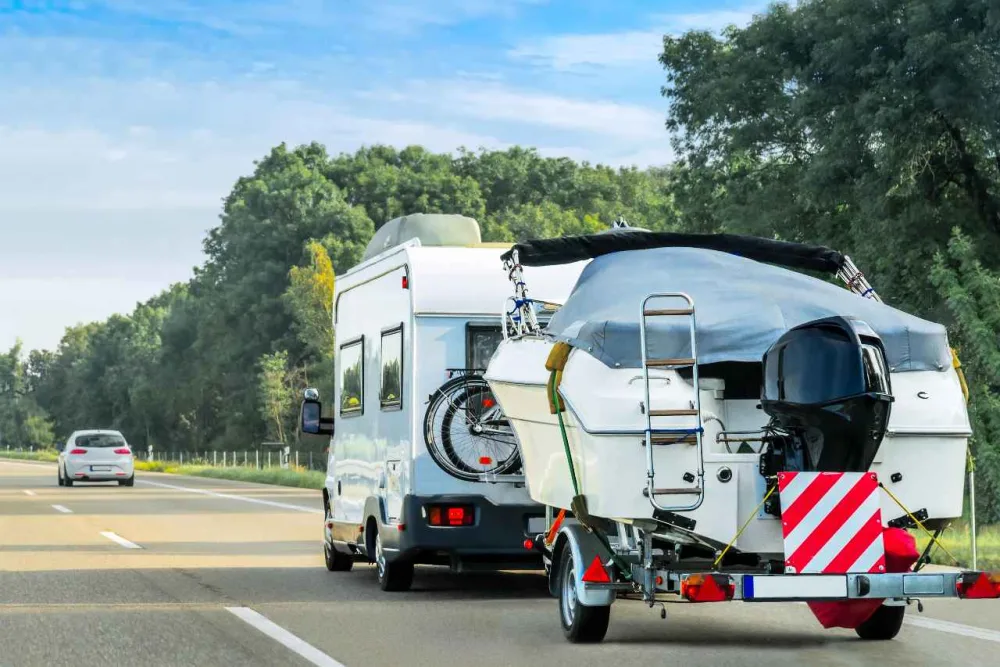Tips for RV and Boat Storage

When you have a taste for expensive toys, it’s in your best interest to take good care of them. Putting your boat or RV into storage is an opportunity to practice proper upkeep and maintenance. And with some expert tips in your back pocket, your ride will be ready to roll every time the road calls your name.
Choose the Right Type of Storage
At RecNation, you can find three different types of vehicle storage options throughout our facilities:
- Uncovered: Outdoor parking in an open lot
- Covered: Outdoor parking with roof coverage
- Indoor: Fully enclosed storage with the most protection
As you’re deciding which type of vehicle storage to rent, weigh the costs and benefits of each type available. Uncovered parking storage is the most affordable storage option. Meanwhile, indoor storage offers the highest level of protection but comes at the highest price. Consider covered storage to be a good middle ground.
RV Storage Tips
Once you’ve decided what type of storage to rent for your land yacht, it’s time to get it there. However, we recommend you take a few steps prior to kissing your camper goodbye for the season.
Clean Your RV
Many of our boat and RV storage facilities feature vehicle washdown areas, enabling you to get your RV squeaky clean on the outside, but certainly don’t forget about the inside. Scrub that toilet, sweep those floors, vacuum up the crumbs—the whole nine yards.
Remove all food and drink, and even take items such as cleaning supplies and hygiene products. While in storage, your RV could be exposed to a wide range of temperatures, and the last thing you want is to return to your RV to find a mess left by an exploded canister or a leaky bottle.
Drain Tanks
Thoroughly flush the black and gray tanks. Black tanks should only be dumped into a septic system to avoid spreading harmful diseases. Many RecNation facilities have dump stations available, but so do many campgrounds and RV parks.
Special care needs to be taken if you’ll be storing your RV for the winter, as moisture left in your RV systems could cause extensive damage if it freezes and expands. In that case, use either the blowout method or the antifreeze method to flush and dry all systems. Many owner’s manuals will have specifications for winterizing your RV, so be sure to check yours (even if for the very first time) to learn the best RV winterization methods for your particular ride.
Boat Storage Tips
Your boat might float, but it collects a great deal of gunk and grime while it sits in the water. Take the time to get it in top shape when putting it into storage, and let it begin with a thorough cleaning.
Regularly Clean Your Boat
As a general rule of thumb, wash your boat at least once a month. When cleaning the outside of your boat, the use of common household cleaners, such as dish soap, is not recommended. Designed to cut through grease and food, dish soap can strip the wax, exposing your boat to harmful UV rays. Instead, if you’re doing a routine boat cleaning, a dedicated boat soap is your best bet. These cleaners will get the job done without the use of harsh chemicals that are bad for your boat and can compromise aquatic ecosystems.
Buff and Wax
Boats that are stored outdoors should be waxed more frequently than ones stored within fully enclosed storage, as the increased sunlight exposure requires additional protection. Usage, however, also makes a big difference. For the most part, boats stored outdoors need to be waxed every three or four months. Those stored indoors can get away with only waxing every six months or so.
Before waxing, you need to have a clean surface to work with. In this case, you do want to strip off the old wax. Use a dewaxer, such as one with toluene, to fully remove old grease and wax before buffing the surface with either a boat polish or a buffing compound.
Then, once she’s shiny and clean, reapply fresh wax. Use a soft cloth or sponge and apply using circular motions. Always work in small sections, and be prepared to dedicate most or all of your afternoon to the process if you like to get things done right.
Eliminate Moisture
While your boat is built to be on the water, moisture is still the common enemy of all vehicles. Before you put it into storage, pull the plug and open hatches and windows to let it air out. Don’t leave wet items inside, such as life jackets, sails, and towels. A wet/dry vacuum can help dry out damp carpet interiors and speed up the drying process. A marine dehumidifier is also a worthy investment for boats with enclosed cabins.
However, to avoid creating an inviting environment for pests and rodents, be sure to close every opening and fill holes with steel wool before you put the boat into storage for any extended period of time.
Locate a RecNation Boat and RV Storage Facility Near You
A RecNation facility can be everything you need and more for easy, convenient boat and RV storage. Locate your nearest facility and see what’s available to get started today!
